It’s already March as I sit down to write this update. While the year is flying by so fast world events continue to make depressing reading with wars, political disharmony and general discontent.
Fortunately, in our Amiga sphere things are looking much brighter with numerous hardware and software developments covering all colours of the Amiga spectrum. I tried to cover many of them in the third volume of the Vulture to Vampires trilogy – The computer that refuses to die, but unfortunately there was just not enough space to fully do it justice. If you want to find out just what is included you will have to buy the book and based on Alan Giles Amazon review you will not be disappointed. Here is a small excerpt from his review of volume 3.
I have read this final volume over the Xmas holiday and that boring week of Sundays which follows it, I have enjoyed it thoroughly. If I am ever cast away on Desert island Discs, I will ask for all three volumes to be bound together, because they are all of equal merit – any book that is so superbly produced and presented deserves to be treasured. Buy any one and you will want the other two, I guarantee it.
Thanks Alan, I can’t ask for a better compliment. I always wanted to write the story of the post-Commodore Amiga years after finishing my Amiga Retrospective series for Amiga Future magazine.

I dedicated volume 3 to the amazing collective and enduring passion of the silent majority of Amiga enthusiasts, developers, makers and companies who continually strive to keep the original Amiga dream alive. And to my wife Christine, who continues to support me and my Amiga passion/obsession.
If you are a reader of Amiga Future magazine you will know I also wrote the Classic Reflections series which reviewed the companies and individuals who contributed to the Amiga’s success and what happened to them after Commodore’s demise. I’ve always thought their stories would make a good book too. Maybe I can convince Andreas Magerl to print an Amiga Future Special which combines all the Classic Reflection articles into one publication? If you would like to see a compendium of the Classic Reflections’ articles published by Amiga Future please send an email to Andreas. 😉
I’ve possibly got two more Classic Reflection’s articles in the offing? I sent a copy of my article on MacroSystem, the developer of the DraCo computer the first real Amiga hardware clone, to its founder Jörg Sprave. I also took the chance of sending my Scala article to the company’s original founder Jon Bøhmer. I’m pleased to report that both individuals thanked me for accurately telling their stories and agreed to provide follow-up interviews for the magazine. Now that the trilogy is out of the way, I have a little more time to complete the task.
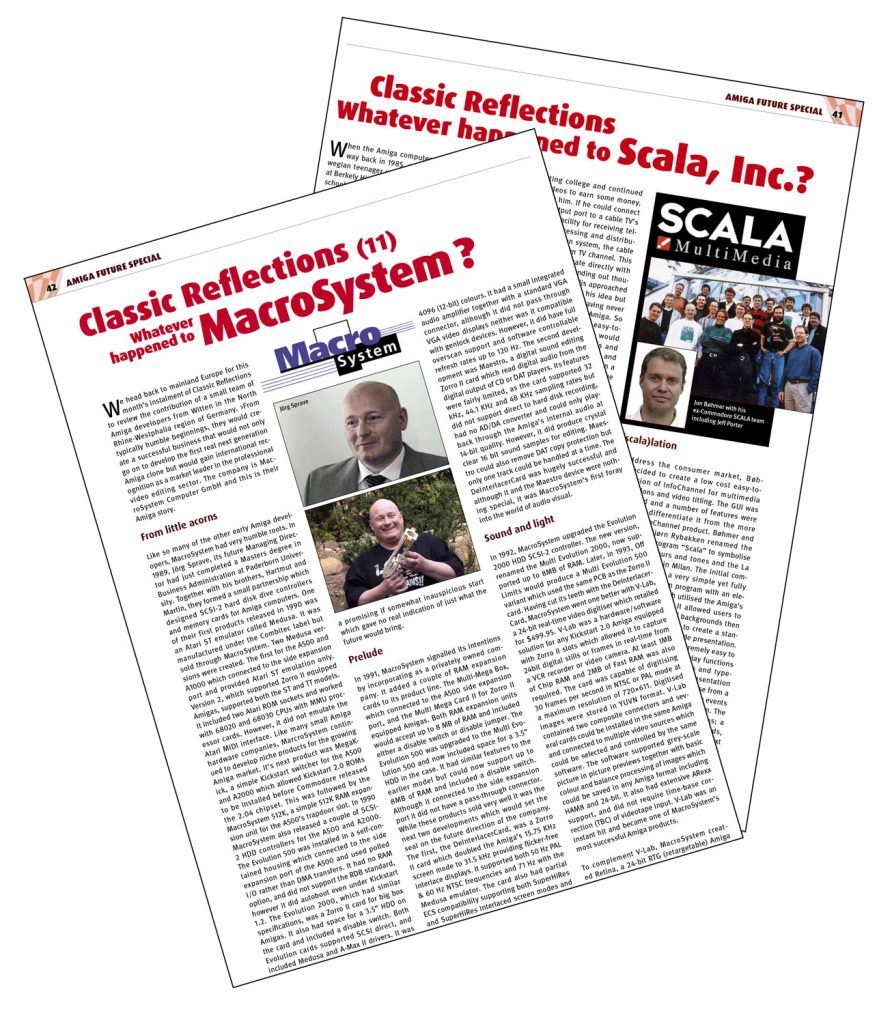
In the meantime if you want to read the original MacroSystem or Scala articles you can find them on the Amiga Future website. (Click of the the links)
Plus two update
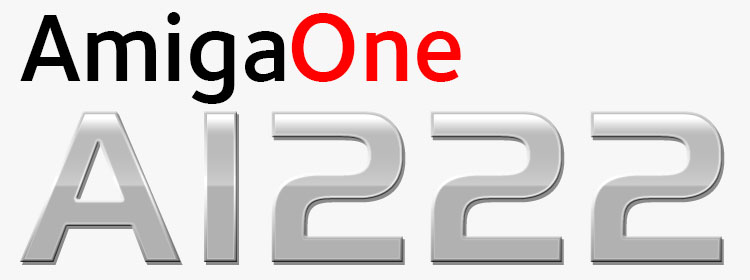
Laurent at AAA Technology reported that he has received the first batch of fully configured A1222 Plus motherboards from Italy. The original batch of boards received over a month ago worked well but did not include the onboard USB headers and had to be sent back to the manufacturer for minor rework. Also a revision change by the MCU manufacturer meant the onboard temperature sensor was not read correctly and the CPU fan did not spin up. When designing the motherboard, Varisys, the original hardware developer, did not think a CPU fan was necessary but included one as an extra precaution. Franck at AAA Technology had been running his version 1.3 prototype for many months without issue including a public appearance at Amiga38 in Germany. Fortunately, according to ACube’s Enrico Vidale it was a very simple fix, “the temperature sensor was not read because the new version of the chip has different address in the bus i2c, so we modified MCU programming firmware to adapt it to new chip.”
The upshot is the first boards and system are now shipping to Early Adopter customers who elected to purchase one of the first A1222 Plus boards/systems.
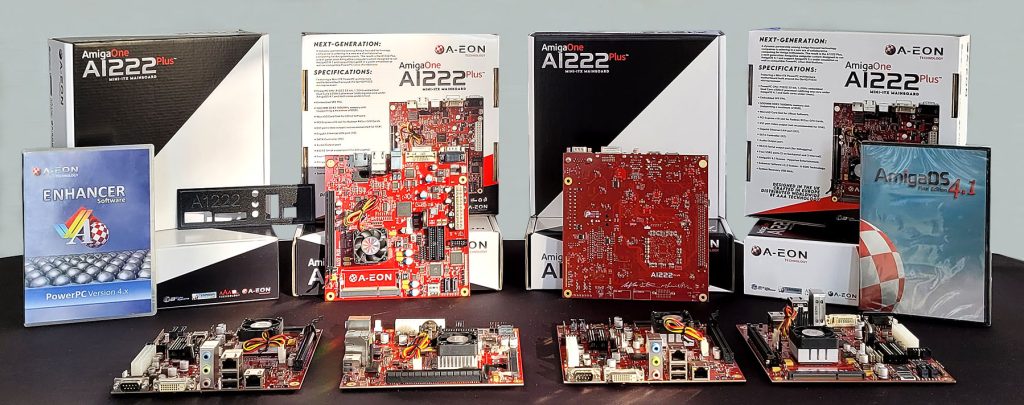
The development of the A1222 Plus been a long and at times difficult journey which I’m pleased to have finally got over the line. It would not have been possible without the help of key individuals and companies who contributed to its successful release. This includes Steven Solie who created an extremely fast and simple but very powerful Recovery USB drive which ensures all the necessary OS4.1 and Enhancer Software files are installed correctly; Alexandre Balaban for producing fully updated AmigaOS 4.1 iso; the efforts of key Hyperion AmigaOS 4 developers and beta testers including Eldee Stephens for his excellent quick_start guide and overall support for the A1222; Matthew Leaman for the Enhancer 2.2 package; Enrico Vidale and the team at ACube Systems who managed manufacturing of the A1222 Plus V1.3 prototype and motherboard production; and finally Laurent and Franck at AAA Technology who are the main distributors of the A1222 Plus. Thank you all.

For more information check out Epsilon’s blog for an excellent in-depth review the A1222 Plus and special Recovery USB pen-drive supplied with all new motherboards and systems. The Recovery USB pen includes and installs AmigaOS 4.1 and all the critical drivers and files provided by A-EON’s Enhancer v2.2 software. It also includes the extra video acceleration library and latest version of DvPlayer which allows the A1222 Plus to play UHD videos with ease (with RadeonRX graphics cards supplied with A1222 Plus system builds.)
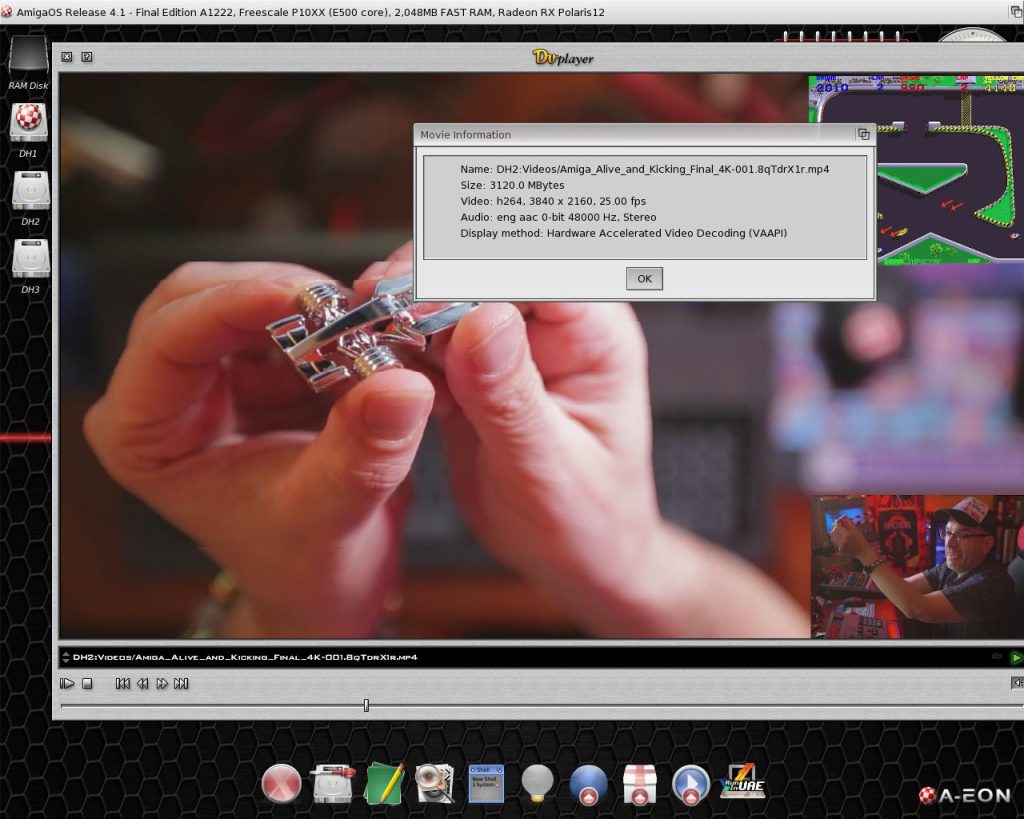
Commodore’s Vision
Way back in time, the last century to be exact, my second home computer was a Commodore C64. It had replaced my B&W (green and black really) Commodore PET CBM 4032 after I saw International Soccer playing in a computer store window when I was living in Aberdeen, Scotland. The colour, animation and sound effects just blew me away. Happy memories indeed. It helped that I was also soccer mad back then. I was already a dedicated Commodore user having chosen the all-in-one CBM 4032 over the Apple II but the C64 secured my future allegiance to Commodore.
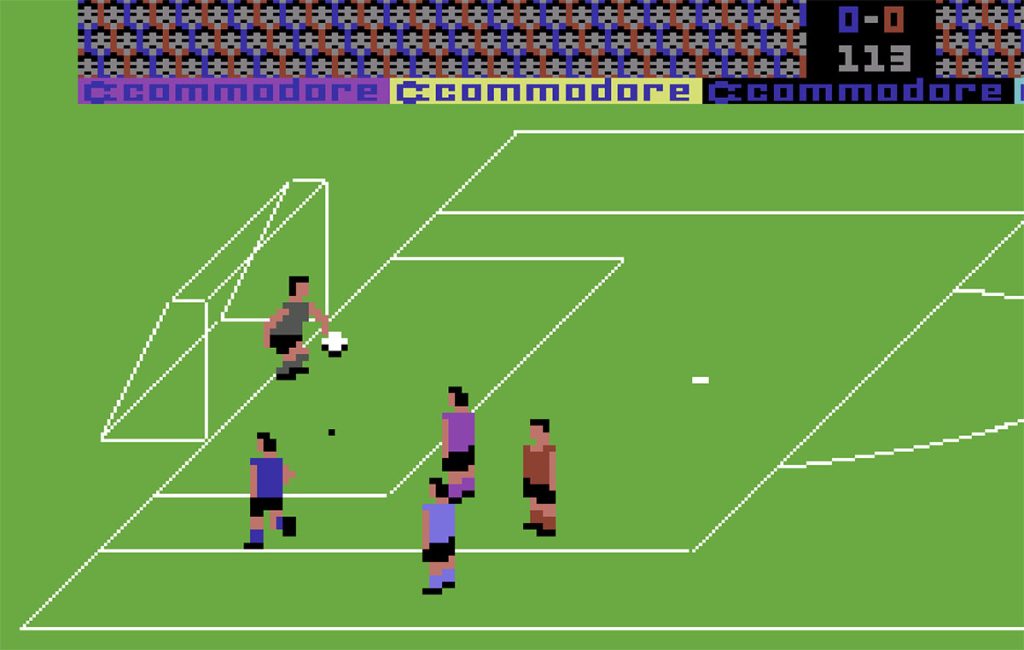

Fast forward to 2010. While the original Commodore company had long since departed the scene, Barry Altman, an American businessman, registered Commodore USA LLC in Florida. After a somewhat rocky start he eventually obtained a licence from Commodore Licensing BV to use the Commodore name for a range of Commodore-branded all-in-one keyboard x86 PC computers. His first product, the Commodore Phoenix was a rebadged version of the Cybernet ZPC-GX31. The early Commodore USA website was full of mocked up images of possible Commodore & Amiga branded PCs. Altman gained some notoriety for issuing a legal threat to Thom Holwerda of OSNews, who like many Commodore enthusiasts viewed some of Altman’s early claims with a high degree of scepticism.
Commodore USA began to win over some of the critics when they released images of their prototype injection moulded C64 bread-bin style case being designed for its PC64 range. Eventually the PC part of the computer name was dropped and it was renamed C64x and would be available in three formats. The C64x barebones (case only), the C64x Ultimate and the top of the range C64x Extreme.
The C64x machines originally shipped with Ubuntu 10.10 but this was replaced by a new operating system, built around a reworked Linux distribution based on Debian and Mint that could run legacy Commodore and Amiga software via emulators based on WinUAE and VICE. Developed by Leo Nigro, it was originally called Workbench 5.0 but it was quickly renamed Commodore OS Vision, presumably to avoid potential legal issues. Commodore USA also announced plans for Amiga PC versions. Sadly Altman passed away in December 2012 and shortly after, in September 2013, Commodore USA ceased trading and with it went his ambitious plans for new Commodore and Amiga branded PC models. Fortunately it would not be the end of the C64x range.

Sean Donohue of UK based My Retro Computer Ltd. purchased all of Commodore USA’s assets in 2014. This included the website, moulds and some stock. It took a number of years before he had the funds to realise his dream of relaunching the C64x range. He started by selling the barebones cases and Raspberry Pi adaptor kits to allow purchasers to build their own bread-bin PC under the My Retro Computer My64 and MyVic20 brand-names. Donohue finally obtained a licence to use the Commodore name and launched a very successful Kickstarter (and Indiegogo) crowdfunding campaign to create Commodore-branded PC version of the C64x and barebones case.
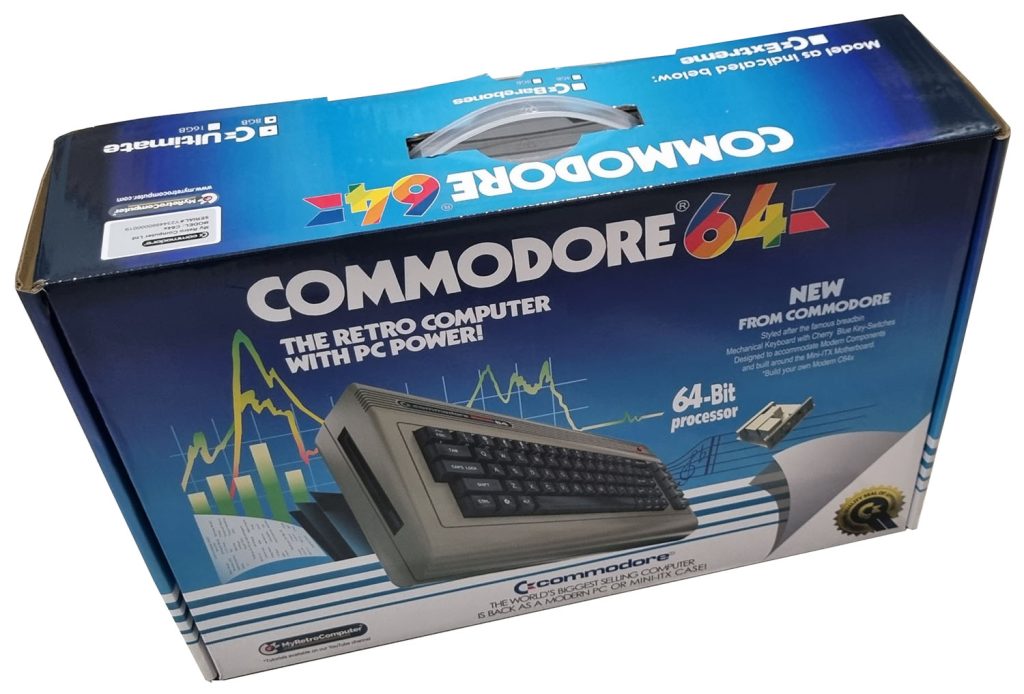
I supported the campaign and selected the C64x Ultimate as my reward. I received my system in New Zealand just before Christmas which arrived intact and in perfect condition after international shipment from Hong Kong. It was packaged in a custom printed cardboard box which contained the C64x Ultimate, a separate PSU and a small printed manual. A docking kit was also included to allow a second optional 2.5″ SATA drive to be easily installed without opening the case. The C64x case faithfully reproduces the look and feel of the original C64 bread-bin design right down to the clunky C64 keyboard. The keyboard is actually a solid mechanical Cherry Switch model, which just like the original C64 keyboard, is not that that great for touch typing but OK for a hunt and peck typists like me! Weighing in at 2.63 Kg the C64x is much heavier than the original C64 or the even lighter THEC64 model from Retro Games. It is complete with all the ports you might expect to find on a modern PC including eight USB ports (4 x USB 2.0 and 4 x USB 3.0). My machine was supplied with 8 Gb of RAM and an internal 512 Gb M.2 hard drive which, although the manual stated Commodore OS Vision would be pre-installed, did not contain any OS. However, a link was supplied to Leo Nigro’s website for downloading the operating system and it did not take me long to get the C64x up and running with the Linux based OS. It was very simple to connect to my home network by wifi and my ColorQube 8570 network printer was instantly recognised. I wish AmigaOS could streamline network printer setup as effortlessly.
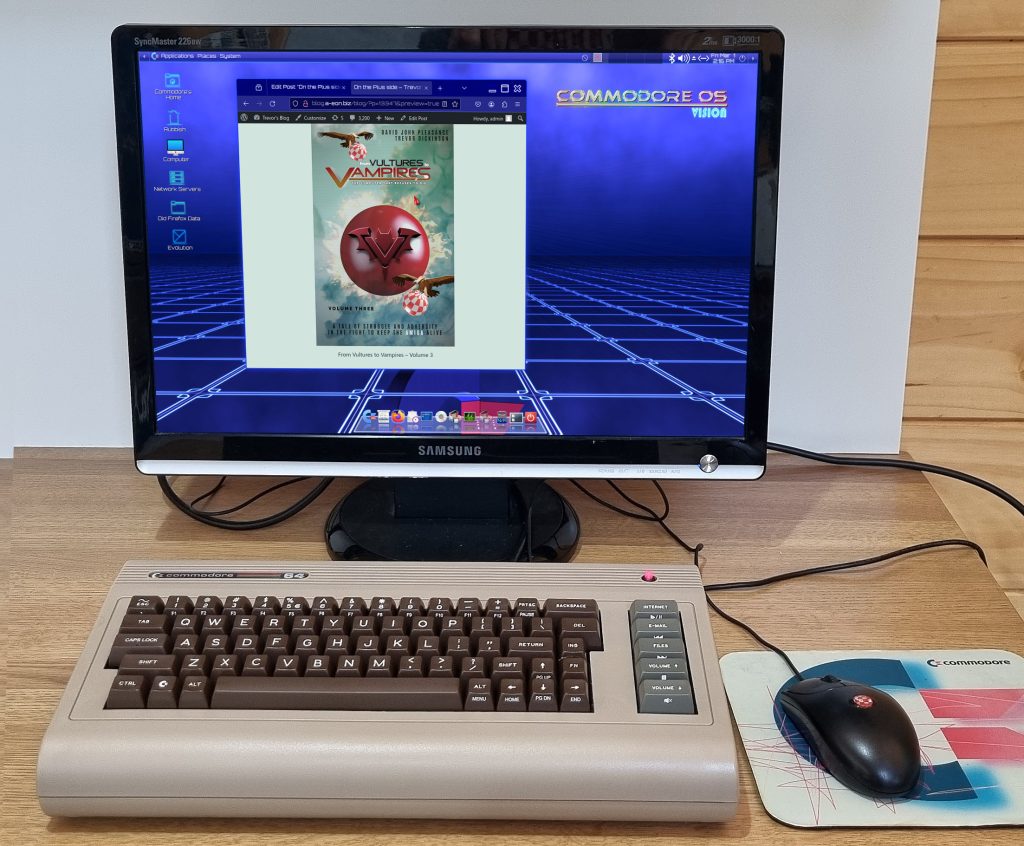
To complement the C64x re-release, in December last year Leo Nigro released Commodore OS Vision 2.0, an updated version of his heavily customised Linux distribution jam packed with utilities, games and productivity applications from the main stream Linux word which can be downloaded free of charge from his website.

According to Nigro, Commodore Vision, “has been a labour of love, and my vision of the dream Commodore OS I would have wanted in my youth, which was spent tinkering with Commodore and Amiga machines.” The new version, Commodore OS Vision 2.0 is a “a retro inspired operating system, providing a distinctive, attractive, advanced and stable operating system experience, that will come pre-loaded with dozens of the latest and greatest productivity, creativity and education software the open source world has to offer. Featuring dozens of exciting 3D games, the latest web browsing technology, a Microsoft Word compatible Office Suite, advanced graphical manipulation programs, 3D raytracing software, advanced software development tools and languages, photo and movie editing and sound and music composition programs.”
Commodore OS Vision is also supplied with a whole host of retro and game console emulators including VICE for Commodore 8-bit models and FS-UAE for Amiga (supplied with AROS ROM images). Commodore OS Vision is not limited to the C64x hardware and can be installed on many compatible x86 machines. It can be run in “live” mode from a USB stick or SD card but for best performance installed on a PC. However, it is a 64-bit OS and will not run on older 32-bit PC hardware.
Final comments: Commodore OS Vision’s GUI will not be to everyone’s taste. I decided to turn off the Wobbly Windows and other Compiz video effect. They were fun at first but IMHO are quite distracting. Fear not, the Linux GUI is easily and readily customised but if you want you can always install Windows 11. Check Donohue’s video tutorial for details. Being a computer-in-a-keyboard design heat dissipation is always an issue and the internal fan can be quite noisy at times when running certain applications. Overall the performance of the C64x Ultimate is more than acceptable. If you want to experience a powerful modern PC in a nostalgic C64 case then this might be the one for you as long as you don’t mind those clunky C64 keys. For more information on the C64x check out the My Retro Computer website.
Play it again OctaMED
As most Amiga enthusiasts know, OctaMED is popular music tracker software originally developed for the Amiga by Teijo Kinnunen in 1989. It began life as the MED music editor and was released under the OctaMED banner in 1991. It became widely used by musicians and composers for creating music, especially within the demoscene and video game industry. OctaMED allows users to compose music using a combination of samples, patterns, and tracks arranged in a sequencer-style interface. It provides features for manipulating samples, creating complex musical arrangements, and exporting music in various formats. Over the years OctaMED has gained a strong following due to its powerful capabilities and intuitive user interface, becoming one of the most iconic music software titles for the Amiga platform. Back in 2015 A-EON Technology purchased the source code and exclusive rights to develop, publish and distribute MED, OctaMED and OctaMed Soundstudio for AmigaOS, AmigaOS 4 and other Next-Generation Amiga-inspired operating systems such as MorphOS and AROS including emulation from its then owner and publisher Ray Burt Frost.

At the time Ray wrote, “Teijo and I are pleased that A-EON have seen the potential of our once very popular music editor for the Amiga users, we both worked many hours/years to get this program to be as popular as it became on the Amiga platform.”
It was always A-EON’s intension to create updated 68K and PowerPC versions of OctaMED for all Amiga related platforms. Sadly Ray passed away four years ago before this could become a reality.
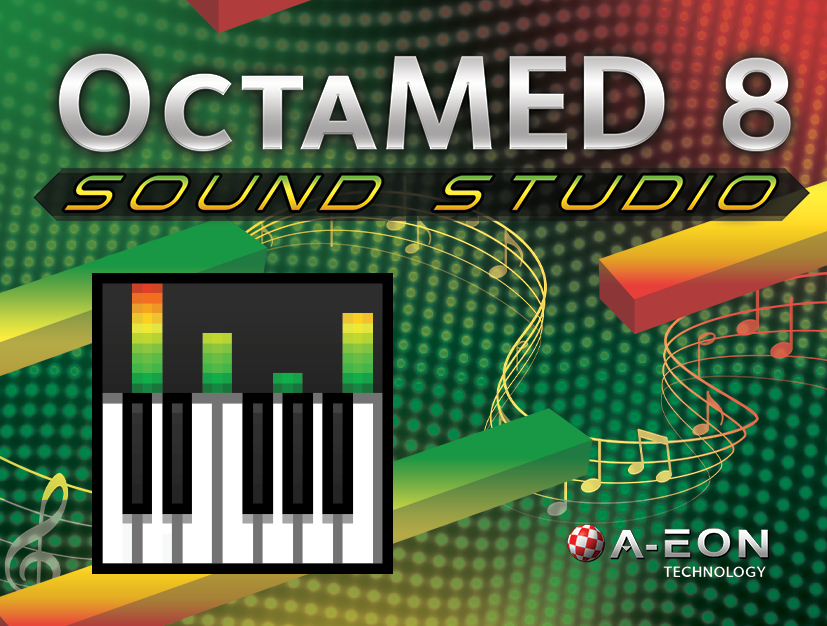
However, I’m pleased to confirm that OctaMED is currently undergoing active re-development. The new version OctaMED Sounstudio V8, is built on top of the original source code and will be available in both 68K and PowerPC versions. It will also be supplied with AmigaKit’s upcoming A600GS, a Classic 68K compatible system for games and productivity software.
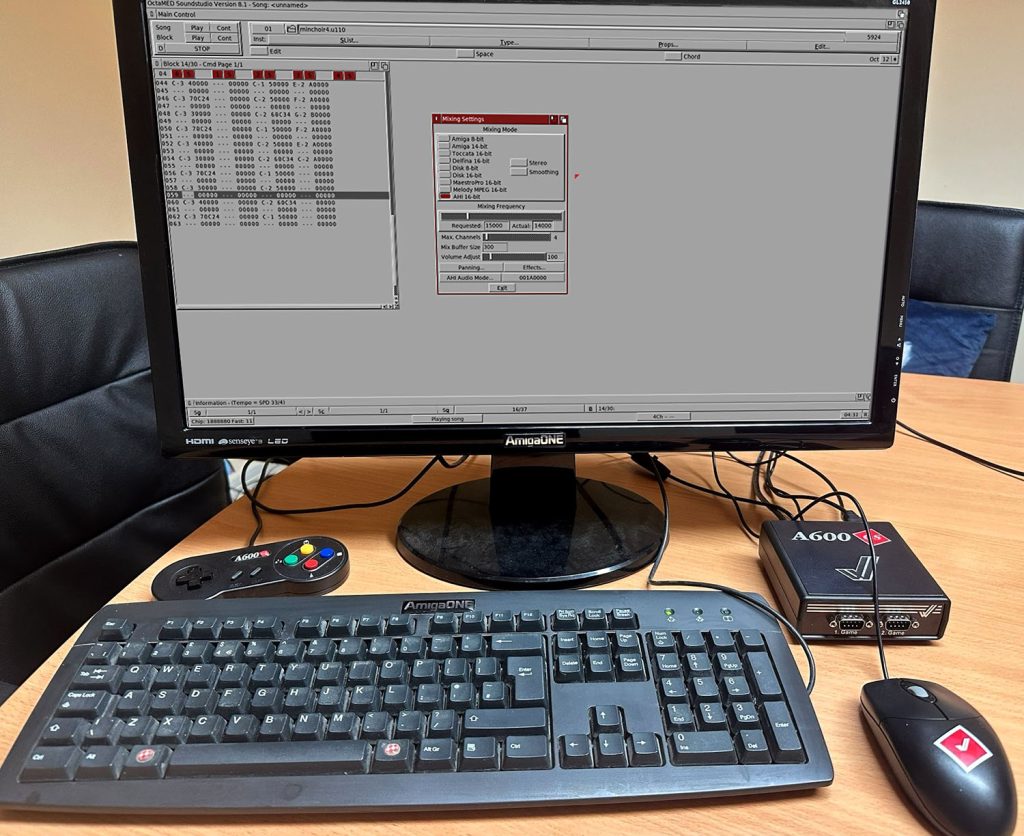
OctaMED has some famous users. Multi-award winning DJ Calvin Harris used OctaMED on the Amiga to create his debut album, I Created Disco. In an interview Harris gave in 2012 he explains how OctaMED and the Amiga influenced his future career:
“Right at the start, when I was about 13 or 14, I only had an Amiga 500 Plus running a bit of tracker software called OctaMED. My brother was big into his computers and, when he moved up to a proper PC, I took charge of the Amiga. With the right interface, you could sample things off CD, so I used to nick loads of loops from Fatboy Slim albums and make my own tunes. In a sense, I suppose you could say that I immediately went on-board. I was working inside the computer. That computer just happened to be an 8-bit Amiga! I know we get all nostalgic about 8-bit samples, but, rest assured, the Amiga didn’t sound lo-fi and gritty. It just sounded… a bit rubbish. It probably didn’t help that the only monitors were the TV speakers from the secondhand TV in my bedroom.”
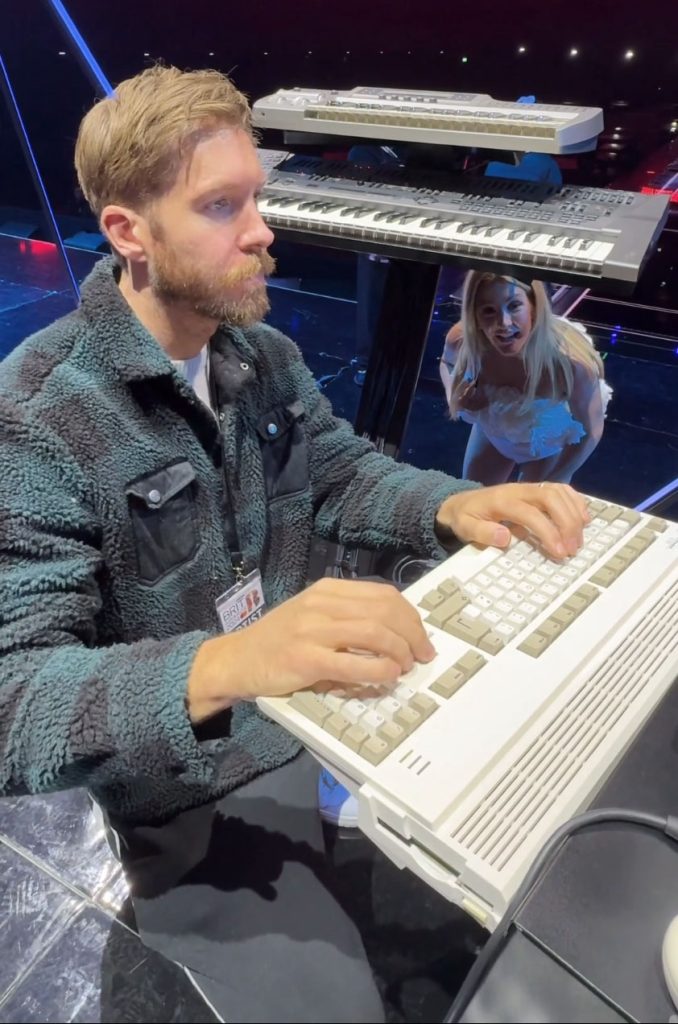
I’ll forgive Calvin for calling the Amiga 8-bit! Of course he was referring to 8-bit sound not the Amiga 500’s 16/32-bit architecture. A couple of weeks ago at the Brit Awards 2024, the UK’s annual pop music awards, Harris gave a live performance of the track Miracle on stage with Ellie Goulding. Alongside him was his Amiga 1200 running OctaMED. Prior to the show he demonstrated a remix of the song to Goulding on the A1200. Unfortunately they did not win the Song of the Year category but Harris picked up the Dance Act award. Only his talent, OctaMED and Amiga made it possible. 🙂

Negentropy – harmonising chaos and order?
OK that does sound a bit grandiose. If you are regular reader of my blog or Amiga Soapbox articles you will know that I’ve been slowly organising my Commodore and Amiga collection in its new location. Two years ago I posted that the building in which my collection was stored in looked like the end scene from the movie Raiders of the Lost Ark.
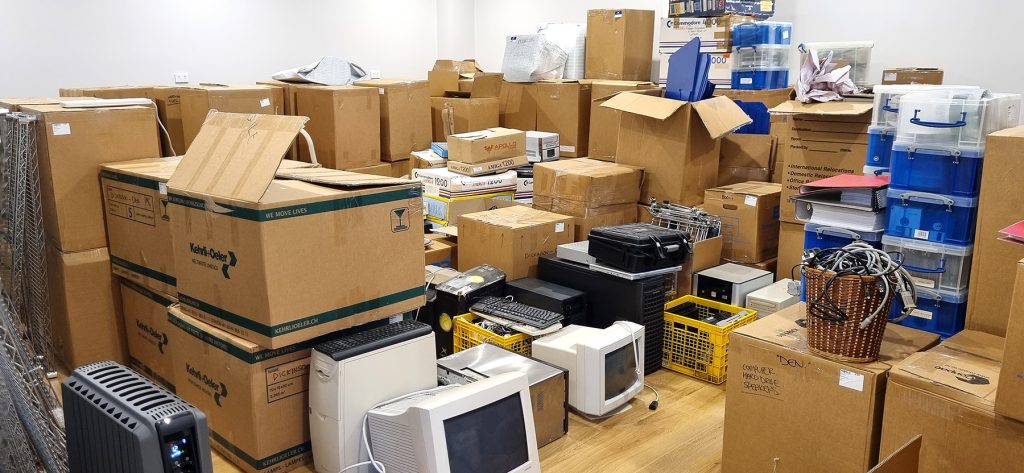
I had earmarked most of January to finish the task, taking advantage of New Zealand’s summer season when my other commitments typically ease up. However, things didn’t quite go as planned. Instead, I found myself heavily involved in the A1222 Plus launch, which entailed testing numerous Recovery/Installation drive images, updating the quick start guide and Technical Reference manual, and coordinating with developers, manufacturers, and distributors. Despite this, I still made a concerted effort to dedicate every spare hour to the reorganisation project. As a result, in the past few weeks, I’ve made good progress, and the collection is finally starting to come together. There is still a lot of work to do connecting all of the computers and peripherals but but at least I can see a light at the end of the tunnel.
Not everything has gone to plan. I was setting up the Next-generation AmigaOne zone and testing each computer one by one. The X1000, X5000/20 and A1222 all checked out OK. The A1-SE and A1-XE also booted to workbench without issue, although I had to change the 3V coin cell batteries in both. I plugged in the power cable to the uA1-C I purchased from GGS Data in Sweden many years ago. It is housed in a nice cuboid compact case and worked well the last time I powered it up to install AmigaOS 4.1 Final Edition Update 2.
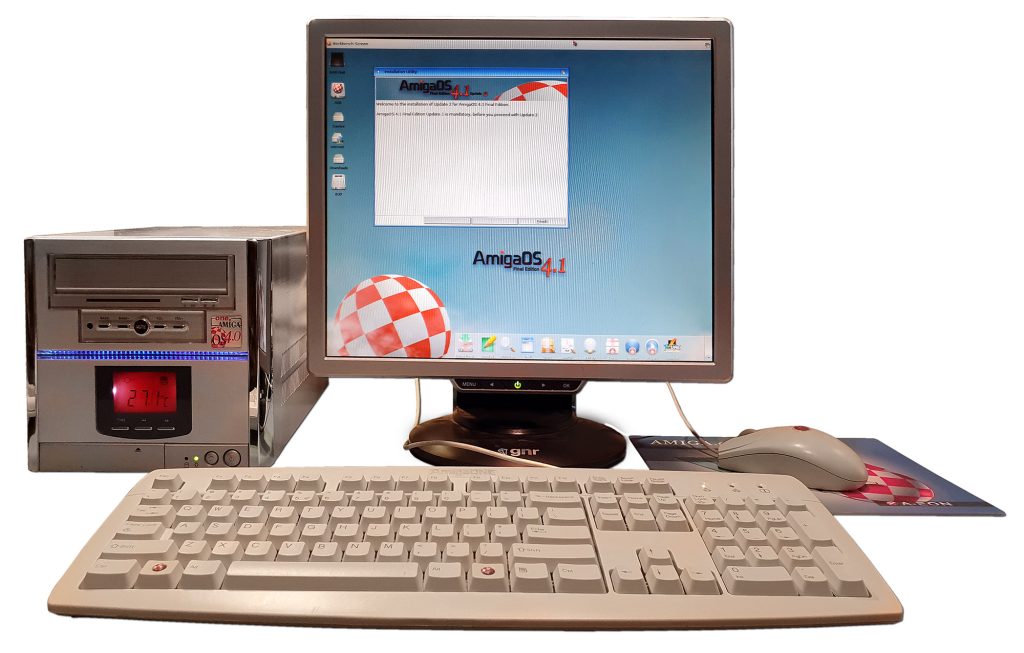
I powered up the machine and immediately heard a loud bang, followed by a complete blackout in the building. To make matters worse, the power outage extended to the main house, much to my wife’s annoyance. After some investigation, I found that two RCD safety circuits had tripped—one in the main house and another in the computer building.
With power restored, I opened the uA1-C to find that the internal PSU’s circuit board was burnt out. I haven’t had the chance to check if the PSU failure caused any damage to the motherboard. This is the second PSU failure in an Eyetech A1 system in recent months and probably the sixth PSU that has failed on me over the years. Of course that is over a lot of years and I do have a few old computers in my collection, so I suppose that is to be expected. 😉
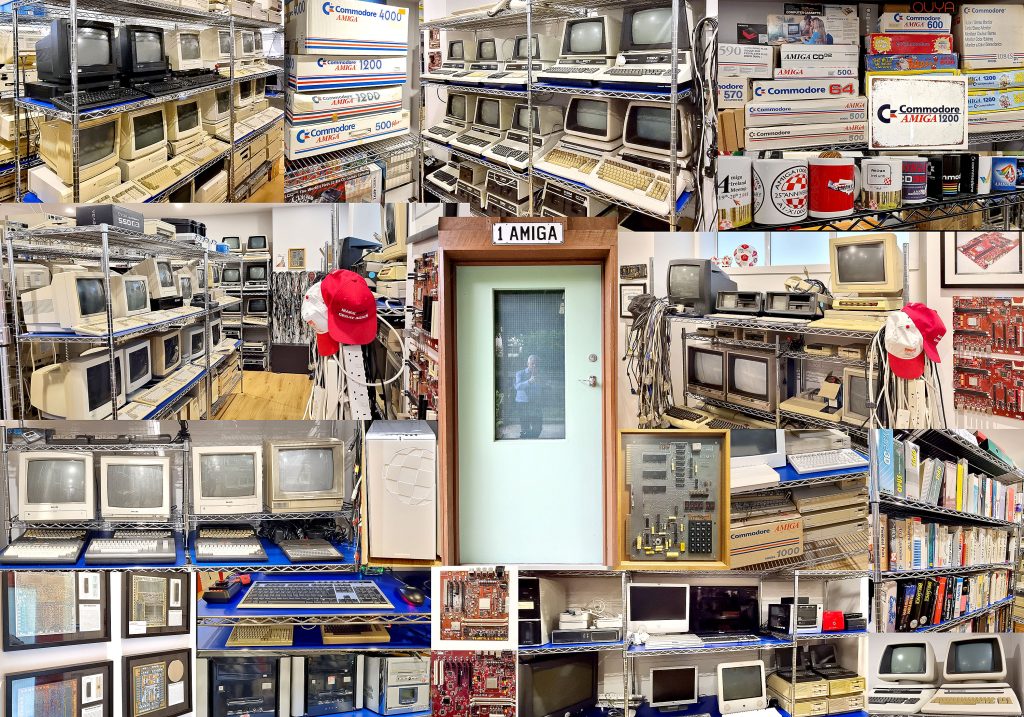
I see Boing Balls
Continuing with the movie theme, I always think of the quote from the movie, Sixth Sense, except I see Boing Balls in everyday objects! Here is my latest collection of Boing images:

I may have had a small influence in creating one of the images above, and no it’s not the cherry flavoured beer. 😉 Even worse than that, I was watching an old episode of Red Dwarf with my wife, when I suddenly stood up and pointed animately at the TV screen……look it’s a ……………!!!!!!!! I just had to take a photo. Shame on you if you can’t identify the object in the photo! 😉

………until next time